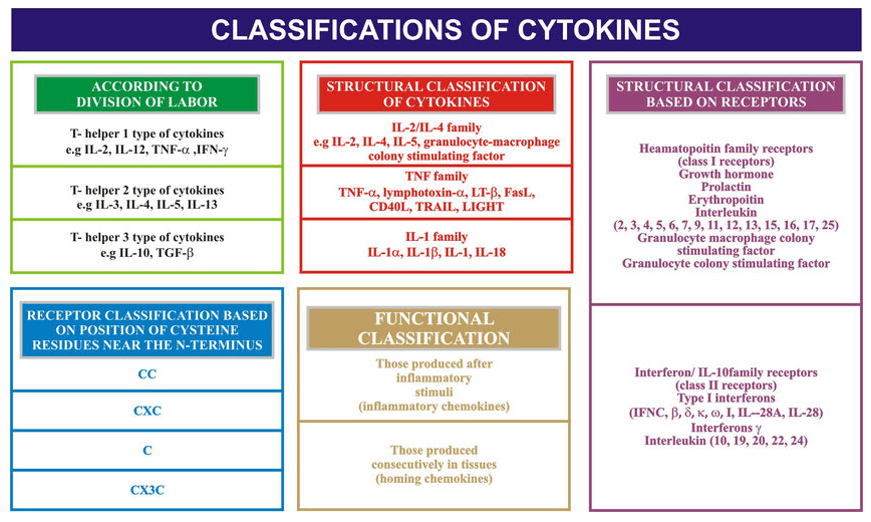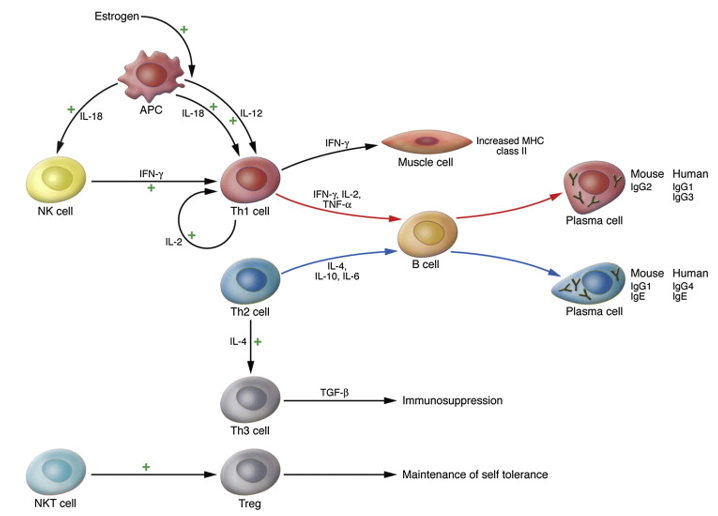NAA Services for Anti-Interferon-α and Interleukin
With integrated natural autoantibody (NAA) research and engineering techniques, Creative Biolabs offers a series of innovative and diversified NAA technical platforms to provide fast and convenient either individual service modules or fully comprehensive services for our worldwide customers. We tailor services to provide high-quality autoantibody services against a variety of autoantigen targets. At present, we are able to provide a full range of anti-interferon-α and interleukin antibody-related services for myasthenia gravis (MG) diagnosis and therapeutic monitoring. Our professional team is optimized to help you get a milestone development in your NAA project.
Background of Anti-interferon-α and Interleukin Antibody
Cytokines, such as interferons (IFN) and interleukin (IL), underlie many immunological functions and are increasingly implicated in disease-related symptoms and pathology. IFN molecules, playing a central role in innate immunity, are expressed by various cell types upon pathogen infection and orchestrate the expression of numerous IFN-I-stimulated genes that aim at eliminating the infection. The thymus is a common target organ for infectious diseases. Inappropriate thymic release of IFN-I subtypes in response to pathogen infection could elicit MG. The majority of ILs are synthesized by helper CD4 T lymphocytes, as well as through monocytes, macrophages, and endothelial cells. They promote the development and differentiation of T and B lymphocytes, and hematopoietic cells. Several ILs are also proved to be associated with MG.
 Fig.1 Classification of cytokines. (Sahibzada, 2017)
Fig.1 Classification of cytokines. (Sahibzada, 2017)
The Role of Anti-interferon-α and Interleukin Antibody in Myasthenia Gravis (MG)
MG is an autoimmune disease mainly mediated by anti-acetylcholine receptor (AChR) antibodies. In the late onset, a thymoma is quite frequent. Thymoma-associated MG (MG-T) patients have very high titers of neutralizing antibodies against interferon type I (IFN-I) or interleukin (IL)-12. Studies revealed that expression of IL-17 mRNA in PBMC and serum IL-17 levels were higher in patients with MG than in controls. IL-17 mRNA and protein levels in patients with generalized MG were higher than that of patients with ocular MG. IL-17 plays an important role in the pathogenesis of patients with MG. As for IL-22, the decreased serum IL-22 level in MG indicated that IL-22 might be protective for MG.
 Fig.2 Cytokine network and cells involved in the pathogenesis and immunoregulation of MG. (Conti-Fine, 2006)
Fig.2 Cytokine network and cells involved in the pathogenesis and immunoregulation of MG. (Conti-Fine, 2006)
Anti-IFN α-2b antibody often presents in MG, particularly in cases of MG-T, and recognizes a variety of epitopes on the IFN α-2b molecule. The appearance of anti-IFN α-2b antibody in MG patients is a consequence of an active process of autoimmunization of the IFN α-2b epitope in which an environmental factor (normally infectious agent) triggers the stimulation of innate (IFN γ), and acquired immunity (IFN α) that in predisposing host leads to the presentation of several antigenic regions of IFN α. This IFN α signature, associated with dysregulated expression of pathogen pattern recognition receptor strongly suggests a viral etiology associated with MG-T.
What We Can Do about NAA?
We can provide a series of customized NAA services to meet the needs of your project at every step, such as NAA detection, NAA profiling, and NAA epitope mapping. Based on our well-established platforms and experienced scientists, we can also offer a wide spectrum of NAA products for your choice.
Creative Biolabs is an undisputed global leader in providing analytical services for NAA against a wide variety of disease biomarkers. We now provide the largest and diversiform portfolio of NAA products and services about anti-interferon-α and interleukin antibody to improve your project. If you are interested in our services, please feel free to contact us for more information.
References:
- Sahibzada, H.A.; et al. Salivary IL-8, IL-6 and TNF-α as potential diagnostic biomarkers for oral cancer. Diagnostics. 2017, 7(2): 21.
- Conti-Fine, B.M.; et al. Myasthenia gravis: past, present, and future. The Journal of clinical investigation. 2006, 116(11): 2843-2854.
Related Services:
- NAA Services for Anti-Acetylcholine Receptor (AChR)
- NAA Services for Anti-Muscle-specific Tyrosine Kinase (MuSK)
- NAA Services for Anti-Lipoprotein-related Protein Receptor 4 (LRP4)
- NAA Services for Anti-Ryanodine Receptor (RyR)
- NAA Services for Anti-Titin Antibody
- NAA Services for Anti-VGKC (Kv1.4)
- NAA Services for Anti-Myofibrillar Proteins

